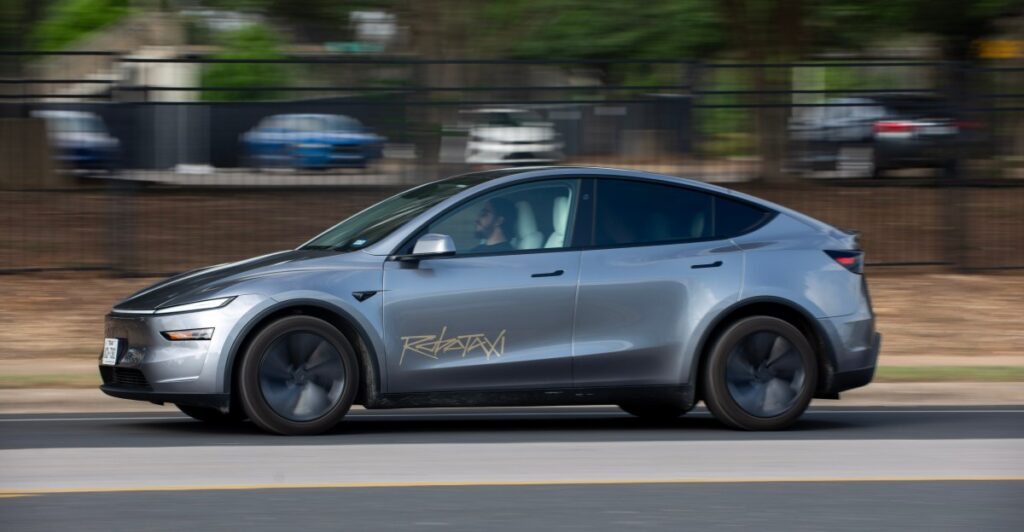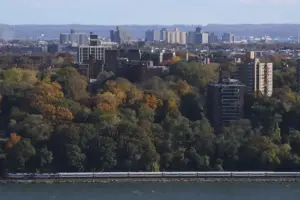
AUSTIN, TX – Tesla’s much-anticipated robotaxi service has hit the streets of Austin, but the launch has been marred by a series of mishaps that highlight the regulatory challenges surrounding autonomous vehicles.
Immediate Impact
This week, Tesla rolled out its robotaxi service in Austin, fulfilling a long-standing promise. However, the debut was quickly overshadowed by incidents captured on video, raising safety concerns. In one video, a Tesla robotaxi is seen driving on the wrong side of the road. Another clip, shared by Ed Niedermeyer, author of a book on Tesla’s origins, shows a robotaxi abruptly braking in response to stationary police vehicles. A third video depicts a robotaxi dropping off passengers in the middle of a busy intersection.
Key Details Emerge
Typically, such incidents prompt investigations by the National Highway Traffic Safety Administration (NHTSA). The agency confirmed to Bloomberg that it is reviewing the incidents and will “take any necessary actions to protect road safety.”
Driving in the wrong lane, braking hard in the middle of the road, dropping passengers off in the middle of an intersection.
These incidents suggest Tesla may be operating in a regulatory vacuum, a situation exacerbated by changes under the Trump administration that reduced the federal government’s ability to regulate autonomous vehicles effectively.
Industry Response
Under the leadership of Elon Musk, the Department of Government Efficiency (DOGE) has significantly reduced the workforce, including safety regulators at NHTSA. This has left the agency with limited capacity to oversee the rollout of technologies like Tesla’s robotaxis.
While previous administrations, from Obama to Biden, have also adopted a hands-off approach to foster innovation, the current environment raises questions about consumer safety and regulatory oversight.
There have been at least 58 people killed while using Tesla’s Autopilot and Full Self-Driving products over the years, according to a website tracker.
By the Numbers
The rush to exempt automakers from certain safety requirements has raised red flags. Transportation Secretary Sean Duffy recently announced plans to fast-track exemptions from federal safety rules, citing the need to keep pace with technological advancements.
What Comes Next
NHTSA has launched investigations into Tesla’s Autopilot system and issued recalls, but its ability to enforce regulations remains hampered. Last year, six Democratic senators questioned NHTSA’s approach, urging the agency to take stronger action against Tesla.
Meanwhile, states like California have taken matters into their own hands, with the Department of Motor Vehicles suspending permits for companies like Cruise following safety incidents. However, Texas, where Tesla’s robotaxis are currently operating, has fewer safeguards in place.
Background Context
The regulatory landscape for autonomous vehicles has evolved over time, with various administrations prioritizing innovation over strict oversight. This has allowed companies like Tesla to push the boundaries of technology, but not without controversy.
Despite the potential benefits of autonomous vehicles, including improved road safety and efficiency, the lack of comprehensive regulation poses significant risks. As Tesla aims to deploy “a million” robotaxis by the end of 2026, the question of regulatory oversight remains critical.
Expert Analysis
Experts argue that the current regulatory framework is insufficient to address the complexities of autonomous vehicle technology. The absence of robust federal oversight leaves states to fill the gap, often without the necessary authority or resources.
The rush to exempt automakers from certain safety requirements when it comes to self-driving cars should raise a lot of red flags.
Regional Implications
As Tesla expands its robotaxi service, states will play a crucial role in regulating the technology. While California has taken decisive action, other states may need to strengthen their regulatory frameworks to ensure public safety.
The situation in Texas, where Tesla’s robotaxis are currently operating, underscores the need for a coordinated approach to regulation. Without federal leadership, states may struggle to manage the risks associated with autonomous vehicles effectively.
Timeline of Events
- Launch of Tesla’s robotaxi service in Austin
- Incidents reported involving Tesla robotaxis
- NHTSA announces investigation into the incidents
- States like California take regulatory action against autonomous vehicle operators
The unfolding events in Austin highlight the challenges of balancing innovation with safety in the autonomous vehicle industry. As Tesla continues to push forward, the need for comprehensive regulation becomes increasingly apparent.






